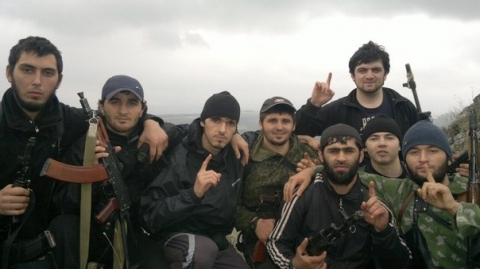
Scholar Studies Relationship Between Religiosity and Extremist Behavior Among Dagestani Youth
Publication: Eurasia Daily Monitor Volume: 10 Issue: 160
By:

In a study of the evolution of the Dagestani insurgency, Dagestani social scholar Zaid Abdulagatov explores the changing social landscape among young Dagestanis in relation to Islam and the state. Among the surprising findings of Abdulagatov, who based the study on extensive polling he conducted, is that the involvement of young people in the insurgency has not increased over the past several years, but has, rather, decreased slightly. He writes, for example, that 76 percent of the insurgents killed in 2005 were between 15 and 30 years old, while the number dropped to 71.2 percent in 2008 and 70.1 percent in 2009. Also, interestingly enough, the largest number of those who identified themselves as Islamic fundamentalists were in the 20-years-old and 49-to-60-years-old age brackets (https://www.isras.ru/files/File/Socis/2012_1/Abdulagatov.pdf). Young people, of course, still comprised the bulk of the insurgent forces, as these figures suggest.
Abdulagatov blames radicalization of Dagestani youth partly on the misconceived 1999 Dagestani law “On the Ban of Wahhabism [a.k.a. Salafism] and Other Extremist Activities.” According to the author, the law mixed two very different paradigms—“inclination to violence under religious and quasi-religious slogans” and “firm adherence to certain norms and lifestyles that the individual considers correct.” The author appears inclined to believe that the roots of the conflict in Dagestan are socio-economic, but that the conflict manifests itself as a religious one. According to Abdulagatov, a highly conservative approach to Islam has a long tradition in Dagestan. “The peculiarity of this conservative view of Islam is that during the years of stability of society, it did not unite the believers into religious sects, political organizations and did not demand that social and political life be modeled on Salafi norms,” he writes. However, he asserts that when the situation changed, including the official labeling of strict believers as extremists, the conservative branches of Islam started to turn violent (https://www.isras.ru/files/File/Socis/2012_1/Abdulagatov.pdf).
The incursion by armed Chechen and Dagestani groups from Chechnya into Dagestan under Islamic slogans in 1999 provoked a strong patriotic response from Dagestanis. Militias armed and trained by the Russian army quickly emerged in the republic to defend it from the militants. Ironically, just a few years after successfully repelling the incursion, civil violence spread to Dagestan itself. The conflict of 1999 in Dagestan, which was a prologue to the second Russian-Chechen war, apparently changed the situation in the republic drastically.
Abdulagatov’s findings show, quite astonishingly, that the indicators of religiosity among Dagestani youth—defined as “up to 29 years old”—gradually decreased from 85 percent in 1996 to 79 percent in the early 2000s. However, in 2004, the religiosity indicator rose again, to 81 percent, and reached a whopping 95 percent among youth aged 18–29 in 2010. The percentage of self-identified Islamic “fundamentalists” among youth rose from 54 percent in 2000 to 78 percent in 2010. In addition, 58 percent of the “fundamentalists” said that Sharia law is superior to secular laws, while 30 percent said they were ready to protest against the state if secular laws contradicted their beliefs.
Some observers have pointed out that the socio-economic and political situation in Dagestan is the major factor affecting the radicalization of society, especially among young people (https://www.regnum.ru/news/1376383.html). Abdulagatov writes that a significant number of disaffected young people join the insurgents not necessarily on the basis of religious issues, but based on other predilections. A survey of Dagestani youth in 2010 asked whether they could join the insurgency under certain circumstances. Seventy-four percent of the believers responded “never,” and only 67 percent of the non-believers gave the same response. Twelve percent of the believers and 22 percent of the non-believers said they might join the insurgency under life’s pressures (https://www.isras.ru/files/File/Socis/2012_1/Abdulagatov.pdf). The believers may have been withholding the truth out of fear for being persecuted by the government, but the willingness of non-believer youth to fight the state is quite telling.
The Dagestani scholar’s findings paint a complex picture of the republic’s social evolution. The research suggests that political and socio-economic factors may indeed be among the most important driving the violent trends in Dagestan. Rising adherence to Islam is also well-documented, although the relationship between Islam and violence is more nuanced than usually suggested. On the one hand, there is a long-held tradition of mobilization of Dagestanis under Islamic slogans when the political and socio-economic situation is unstable. On the other hand, there is also a long tradition of de-mobilization of conservative Islam in the republic when stability returns. The conclusions that can be drawn from Abdulagatov’s work may be that political and economic reforms in Dagestan are needed to stabilize the situation in the republic, while suppressing certain branches of Islam is not the way forward. Officials in the Russian government, however, believe that combatting “unwanted” forms of Islam is a cheaper way to solve the problem than implementing reforms, thereby exacerbating and perpetuating the problem of violence but ensuring that the Kremlin maintains a firm grip on power.




